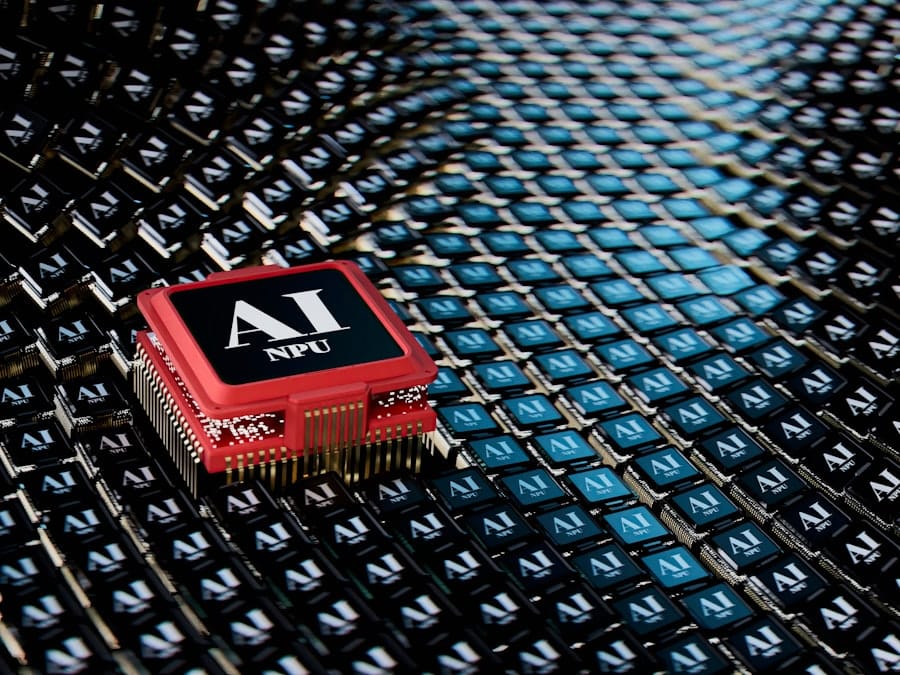Augmented Reality (AR) and quantum computing represent two of the most transformative technologies of the 21st century. AR enhances the real world by overlaying digital information onto physical environments, creating immersive experiences that can revolutionize how we interact with our surroundings. This technology has already found applications in various fields, from gaming and entertainment to education and healthcare.
On the other hand, quantum computing leverages the principles of quantum mechanics to process information in ways that classical computers cannot. By utilizing qubits, which can exist in multiple states simultaneously, quantum computers promise to solve complex problems at unprecedented speeds, opening new avenues for innovation. The intersection of AR and quantum computing is particularly intriguing, as it holds the potential to create interfaces that are not only more intuitive but also vastly more powerful.
Imagine a future where AR applications are driven by quantum algorithms, enabling real-time data processing and analysis that can adapt to user interactions in ways previously thought impossible. This synergy could lead to interfaces that are not only visually stunning but also capable of providing insights and functionalities that are currently beyond our reach. As we delve deeper into the potential of these technologies, it becomes clear that their convergence could redefine our digital experiences.
Key Takeaways
- AR and quantum computing are emerging technologies with transformative potential for user interfaces.
- AR can create immersive, interactive experiences that enhance how users engage with digital content.
- Quantum computing offers unprecedented processing power to handle complex interface computations and data analysis.
- Integrating AR with quantum computing could lead to highly advanced, responsive, and intelligent interfaces.
- Development faces challenges like technical complexity, ethical concerns, and privacy issues, but also presents significant opportunities.
The Potential of AR in Future Interfaces
The potential of AR in future interfaces is vast and multifaceted. One of the most significant advantages of AR is its ability to create context-aware experiences. By integrating real-time data with the physical world, AR can enhance user interactions by providing relevant information exactly when and where it is needed.
For instance, in the field of education, AR can transform traditional learning environments by overlaying interactive 3D models onto textbooks or classroom settings. Students can visualize complex concepts, such as molecular structures or historical events, in a way that fosters deeper understanding and engagement. Moreover, AR has the potential to revolutionize industries such as retail and tourism.
Imagine walking through a store where digital displays provide personalized recommendations based on your preferences or past purchases. In tourism, AR can enhance sightseeing experiences by offering historical context or interactive guides that respond to your location. These applications not only improve user experience but also create new business opportunities for companies willing to invest in AR technology.
As hardware becomes more sophisticated and accessible, the integration of AR into everyday interfaces will likely become commonplace, fundamentally altering how we perceive and interact with the world around us.
The Role of Quantum Computing in Advancing Interfaces

Quantum computing plays a crucial role in advancing interfaces by enabling complex computations that classical computers struggle to perform efficiently. One of the most promising applications of quantum computing is in optimization problems, which are prevalent across various domains, including logistics, finance, and artificial intelligence. For instance, a quantum computer could analyze vast datasets to identify optimal routes for delivery trucks or investment strategies for financial portfolios in a fraction of the time it would take a classical computer.
This capability can significantly enhance the responsiveness and adaptability of interfaces that rely on real-time data processing. Furthermore, quantum computing can improve machine learning algorithms, which are foundational to many modern interfaces. By harnessing quantum algorithms, such as Grover’s search algorithm or quantum neural networks, developers can create systems that learn from user interactions more effectively and efficiently.
This could lead to interfaces that not only understand user preferences but also anticipate needs based on patterns in behavior. As quantum technology matures, its integration into interface design will likely yield systems that are not only faster but also more intelligent, capable of providing personalized experiences that evolve over time.
The Integration of AR and Quantum in Future Interfaces
The integration of AR and quantum computing in future interfaces presents a unique opportunity to create experiences that are both immersive and intelligent. By combining AR’s ability to overlay digital information onto the physical world with the computational power of quantum algorithms, developers can design interfaces that respond dynamically to user inputs and environmental changes. For example, consider an AR application used in medical training that utilizes quantum computing to analyze patient data in real-time.
As a medical student interacts with a virtual patient, the system could provide instant feedback based on complex simulations of various treatment outcomes derived from quantum computations. Moreover, this integration could lead to entirely new forms of interaction. Imagine using hand gestures or voice commands to manipulate virtual objects while a quantum computer processes vast amounts of data to ensure that these interactions are seamless and responsive.
Such interfaces could redefine how we engage with technology, making it more intuitive and aligned with human cognition. The potential for creating collaborative environments where multiple users interact with shared AR experiences powered by quantum computing is another exciting avenue for exploration. This could foster innovation across sectors such as design, engineering, and entertainment.
Challenges and Opportunities in Developing AR and Quantum Interfaces
While the prospects for AR and quantum interfaces are promising, several challenges must be addressed to realize their full potential. One significant hurdle is the technical complexity involved in developing quantum algorithms that can effectively enhance AR applications. Quantum computing is still in its infancy, with many theoretical concepts yet to be translated into practical applications.
Researchers must overcome issues related to qubit coherence, error rates, and scalability before quantum computers can be reliably integrated into everyday technologies. Additionally, there are challenges related to user experience design in AR environments. Creating intuitive interfaces that users can navigate easily while interacting with complex quantum-driven functionalities requires careful consideration of human factors and usability principles.
Developers must ensure that these interfaces do not overwhelm users with information but instead provide meaningful insights that enhance their experience. However, these challenges also present opportunities for innovation. As researchers and developers collaborate across disciplines—combining expertise in quantum physics, computer science, and design—new solutions will emerge that push the boundaries of what is possible.
Case Studies: Successful Applications of AR and Quantum in Interfaces

Several case studies illustrate the successful application of AR and quantum technologies in interface design. One notable example is the use of AR in surgical training programs. Institutions like Johns Hopkins University have implemented AR systems that allow medical students to visualize complex anatomical structures during procedures.
These systems often utilize advanced algorithms for real-time data processing, which could be further enhanced by quantum computing capabilities as they become available. Another compelling case study involves the use of quantum computing in financial services. Companies like D-Wave Systems have developed quantum annealers that optimize portfolio management strategies by analyzing vast datasets more efficiently than classical systems.
While this application does not directly involve AR, it highlights how quantum computing can enhance decision-making processes that could be integrated into user-facing interfaces in finance apps or trading platforms.
Ethical and Privacy Considerations in AR and Quantum Interfaces
As with any emerging technology, ethical and privacy considerations play a critical role in the development of AR and quantum interfaces. The immersive nature of AR raises concerns about user privacy, particularly regarding data collection and surveillance.
Developers must prioritize transparency and user control over personal data while designing these systems. In addition to privacy concerns, there are ethical implications surrounding the use of quantum computing in decision-making processes.
Ensuring fairness and transparency in how these systems operate will be essential to gaining public trust and acceptance. Engaging stakeholders from diverse backgrounds—including ethicists, technologists, and community representatives—will be crucial in navigating these complex issues.
The Future of AR and Quantum Interfaces: Predictions and Possibilities
Looking ahead, the future of AR and quantum interfaces is filled with exciting possibilities that could reshape our interactions with technology. As both fields continue to evolve independently, their convergence will likely lead to breakthroughs that enhance user experiences across various domains. We may see widespread adoption of AR applications powered by quantum algorithms capable of processing real-time data at unprecedented speeds, enabling seamless interactions that feel almost magical.
Moreover, advancements in hardware will play a pivotal role in this evolution. As quantum computers become more accessible and affordable, developers will have greater opportunities to experiment with integrating these technologies into consumer-facing applications. The proliferation of lightweight AR devices—such as smart glasses—will further facilitate this integration by allowing users to engage with digital content effortlessly while benefiting from the computational power of quantum systems.
In conclusion, the intersection of augmented reality and quantum computing holds immense potential for creating innovative interfaces that enhance our daily lives. By addressing technical challenges and ethical considerations while fostering collaboration across disciplines, we can unlock new possibilities for how we interact with technology in the future.
In the quest to understand the future of technology interfaces, the article “Exploring the Role of AR and Quantum in Future Interfaces” provides valuable insights into how augmented reality and quantum computing will shape user experiences. For those interested in enhancing their content creation processes, a related article on boosting content with NeuronWriter SEO and NLP optimization offers practical strategies that can complement the advancements discussed in the exploration of AR and quantum technologies.
FAQs
What is Augmented Reality (AR)?
Augmented Reality (AR) is a technology that overlays digital information, such as images, sounds, or data, onto the real-world environment, enhancing the user’s perception and interaction with their surroundings.
How does Quantum technology relate to future interfaces?
Quantum technology leverages principles of quantum mechanics to process information in fundamentally new ways, potentially enabling faster computation, enhanced security, and more sophisticated data handling in future user interfaces.
What are future interfaces?
Future interfaces refer to advanced methods and technologies that enable humans to interact with digital systems more naturally, efficiently, and intuitively, often incorporating innovations like AR, virtual reality (VR), artificial intelligence (AI), and quantum computing.
How can AR improve user interaction in future interfaces?
AR can improve user interaction by providing immersive and context-aware experiences, allowing users to visualize and manipulate digital content seamlessly integrated with the physical world, thereby enhancing usability and engagement.
What potential benefits does quantum computing offer for interface development?
Quantum computing can offer benefits such as processing complex data sets rapidly, enabling real-time analytics, improving machine learning algorithms, and enhancing encryption methods, all of which can contribute to more responsive and secure future interfaces.
Are AR and quantum technologies currently integrated in commercial products?
As of now, AR is widely used in various commercial applications, including gaming, education, and retail. Quantum technology is still largely in the research and development phase, with limited commercial deployment, but ongoing advancements suggest future integration possibilities.
What challenges exist in combining AR and quantum technologies for future interfaces?
Challenges include the technical complexity of quantum computing hardware, the need for specialized algorithms, integration with existing AR platforms, high development costs, and ensuring user-friendly experiences despite underlying sophisticated technologies.
How might AR and quantum technologies impact industries?
These technologies could revolutionize industries such as healthcare, manufacturing, education, and entertainment by enabling more precise simulations, enhanced data visualization, improved decision-making, and secure communication channels.
Is specialized knowledge required to develop AR and quantum-based interfaces?
Yes, developing interfaces that combine AR and quantum technologies typically requires expertise in computer science, quantum physics, software engineering, and user experience design to effectively harness their capabilities.
What is the future outlook for AR and quantum in interface design?
The future outlook is promising, with ongoing research aimed at overcoming current limitations. As both AR and quantum technologies mature, they are expected to play a significant role in creating more immersive, intelligent, and secure user interfaces.

